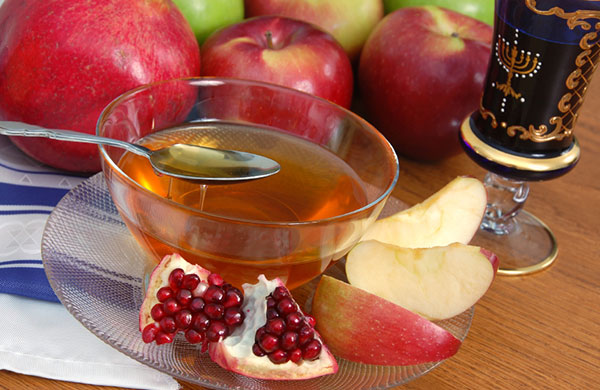 It’s hard to believe that there are five new fruits that you can try this Rosh Hashanah. Well, some of them aren’t new, but you probably haven’t heard of them before. Try one, they’re all exotic and delicious.
It’s hard to believe that there are five new fruits that you can try this Rosh Hashanah. Well, some of them aren’t new, but you probably haven’t heard of them before. Try one, they’re all exotic and delicious.
Ackee
 The ackee is native to tropical West Africa. A relative of the lychee and similar in taste and consistency, the ackee’s fruit is soft and white and grows around three large, dark seeds. Ackees are generally cooked and canned before being sold, with good reason: eating an unripe ackee can result in unpleasant side effects, however ripe ackees are wonderful.
The ackee is native to tropical West Africa. A relative of the lychee and similar in taste and consistency, the ackee’s fruit is soft and white and grows around three large, dark seeds. Ackees are generally cooked and canned before being sold, with good reason: eating an unripe ackee can result in unpleasant side effects, however ripe ackees are wonderful.
Mangosteen
 This is not an Ashkenazi mango—that would be Mangostein. The mangosteen is actually a tasty and widely desired fruit that grows almost exclusively in Thailand.
This is not an Ashkenazi mango—that would be Mangostein. The mangosteen is actually a tasty and widely desired fruit that grows almost exclusively in Thailand.
Mangosteens are renowned for their delectable flavor and fresh fragrance. They can be expensive and hard to find in the US, but the canned variety are easier to come by.
Jabuticaba
 The jabuticaba tree is very striking. Its fruit grows in clusters up and down its trunk rather than hanging from branches. It is native to southeastern Brazil, and is somewhat of a cultural icon for peoples of that region. The jabuticaba fruit is usually eaten fresh, but because it starts to ferment only three or four days after being picked, is also widely used in jams, wines, and liqueurs.
The jabuticaba tree is very striking. Its fruit grows in clusters up and down its trunk rather than hanging from branches. It is native to southeastern Brazil, and is somewhat of a cultural icon for peoples of that region. The jabuticaba fruit is usually eaten fresh, but because it starts to ferment only three or four days after being picked, is also widely used in jams, wines, and liqueurs.
Despite being deliciously sweet and chock full of anti-oxidants, the jabuticaba has not gained much popularity outside Brazil, as its very brief shelf life makes it impossible to export efficiently. In other words, it won’t be easy to find.
Kiwano
 Also known as the horned melon, jelly melon, hedged gourd, blowfish fruit, or my personal favorite, the African horned cucumber. The kiwano is native to Africa but now grows in California, Chile, Africa, and New Zealand. Its flesh is bright green and jelly-like, and tastes like a cucumber with a hint of citrus. The peel can also be eaten and is rich in Vitamin C and fiber. Kiwanos can be eaten raw or cooked, juiced and mixed into lemonade.
Also known as the horned melon, jelly melon, hedged gourd, blowfish fruit, or my personal favorite, the African horned cucumber. The kiwano is native to Africa but now grows in California, Chile, Africa, and New Zealand. Its flesh is bright green and jelly-like, and tastes like a cucumber with a hint of citrus. The peel can also be eaten and is rich in Vitamin C and fiber. Kiwanos can be eaten raw or cooked, juiced and mixed into lemonade.
Squared Watermelon
 Not only do these really exist, you can actually grow them in your backyard. Therefore, whether they should count as a new fruit is debatable. The secret of squared, or cubic, watermelons is that they are really just regular watermelons grown into square-shaped glass boxes. An enterprising farmer on the Japanese island of Shikoku developed this method about 20 years ago to make the large, cumbersome melons easier to store. Today, the product is fashionable among the elite of Tokyo and Osaka and can be purchased for a mere 10,000 yen (about $83).
Not only do these really exist, you can actually grow them in your backyard. Therefore, whether they should count as a new fruit is debatable. The secret of squared, or cubic, watermelons is that they are really just regular watermelons grown into square-shaped glass boxes. An enterprising farmer on the Japanese island of Shikoku developed this method about 20 years ago to make the large, cumbersome melons easier to store. Today, the product is fashionable among the elite of Tokyo and Osaka and can be purchased for a mere 10,000 yen (about $83).
Binyamin Kagedan has an MA in Jewish Thought from the Jewish Theological Seminary of America.


